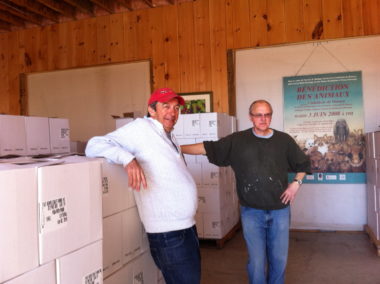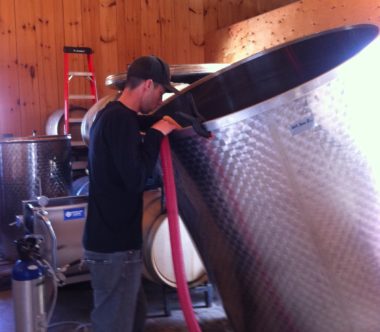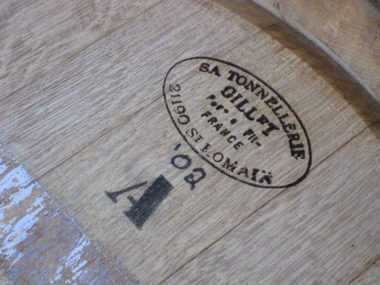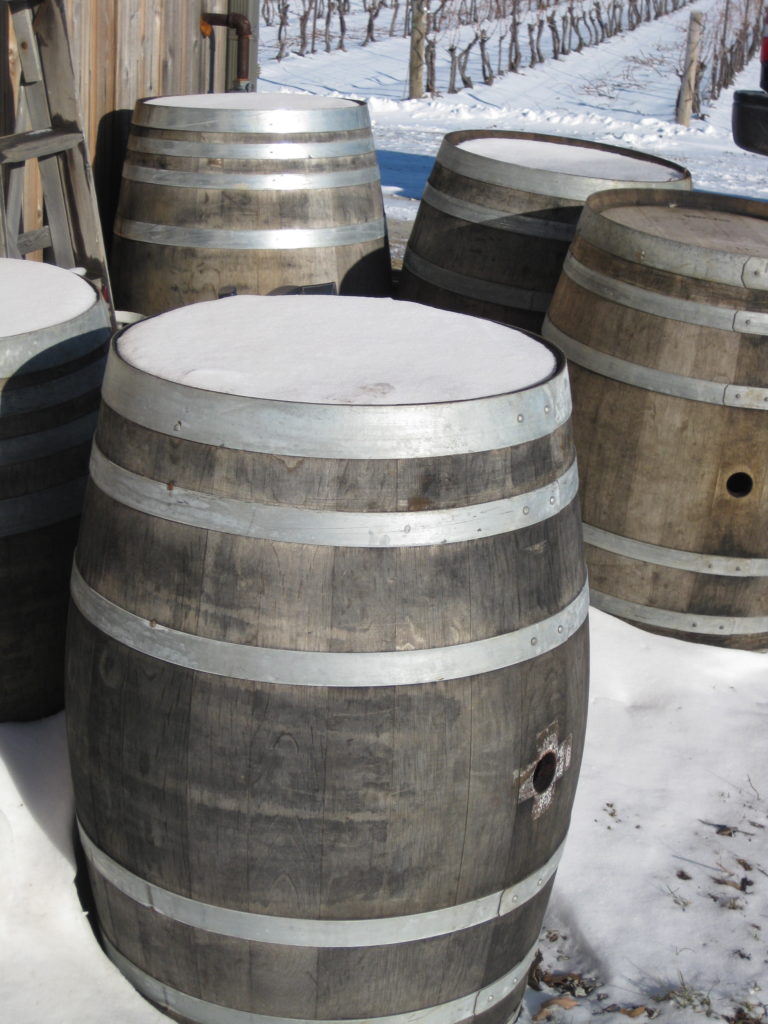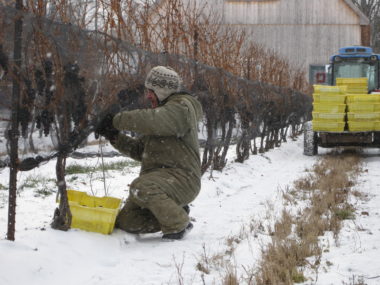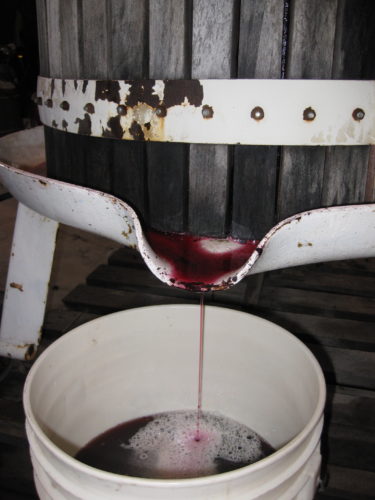Being stuck in the mud never felt so good. The usual nuisance of “sinking while pruning” seems a welcome hindrance this year. My smile widens with each heavy step and I can’t help thinking that “thaw” is a beautiful word.
There are many things that signal spring to my internal body clock: bottling new wines, the smell of melted wax and new cardboard, writers cramp, bud counts, the Masters, muddy paws and baseball. Together, they form a complex emotional mix of stress (bottling and dead buds) and thrilling relief (tasting the new wines and the promise of golf season).
April 2nd was my own personal vernal equinox this year, as we bottled all of our new wines (830 cases!) without a hitch. It represents the culmination of three years of work for the 2012 reds and a year for the 2014 whites. Big thanks to all of my helpers, from the case fillers to the bottle dumpers to the humble stackers. I’ve said it before, but my biggest advice to someone starting a mini craft winery like ours would be to find a reliable mobile bottling line. Glenn, Randy and Justin from Hunter Bottling make my life easy on bottling day. The new truck is amazing!
Those who’ve joined our contact list will receive an email in the coming weeks with details of the new release. Our goal is to re-open the barn by May 1st and I can’t wait for everyone to try the new wines!

